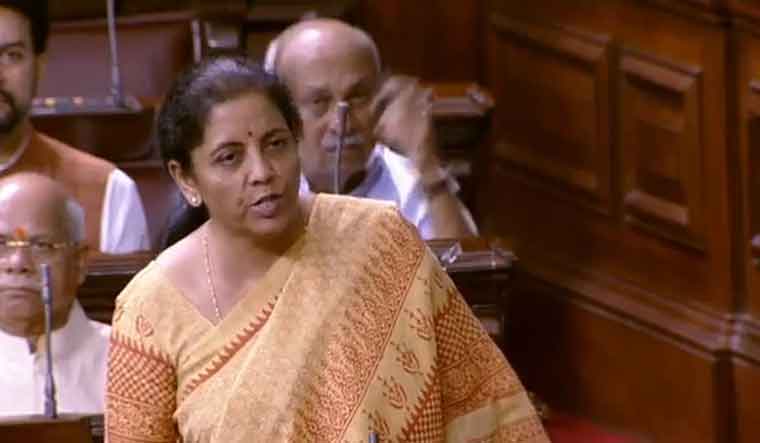Ahead of Modi government's maiden budget in the second term, Finance Minister Nirmala Sitharaman tabled the Economic Survey of India 2019 in the Rajya Sabha on Thursday. The survey, projecting the state of health of the country's economy and outlining the challenges ahead of the Union budget, predicts 7 per cent GDP growth in the current financial year.
The Economic Survey of India says that India's GDP growth has averaged a high of 7.5% in last five years. Making Indi a $5 trillion economy is at the core of Economic Survey 2019. The survey says India needs to grow at 8 per cent per year to reach this mark.
What is Economic Survey of India?
Often, the survey serves as a policy guideline for the Union budget. However, its recommendations are not binding on the government. The survey traditionally has chapters on macro economy as well as industry and different sectors and the outlook. The Economic Survey 2019, prepared by Chief Economic Adviser Krishnamurthy Subramanian, is likely to flag headwinds that the economy might face in its pursuit to become the world's fifth largest economy. The Economic Survey of India will chart out reform road map of Modi 2.0 govt
It is also likely to detail reforms road map needed to fulfil Modi's goal of more than doubling the size of the economy to $5 trillion by 2024.
Since 2015, the survey document comes in two parts. One part consists of commentary on the state of the economy, which is released before the Union Budget. The other part carries key economic statistics and data, which is tabled in July or August. This split in the presentation took effect after the Union Budget was moved from the last working day of February to the first day of the month in 2017.
Indian economy
It comes at a time when the economy is facing headwinds in manufacturing and agriculture sectors that saw growth rate slowing down to 5-year low of 5.8 per cent in the January-March quarter. The Economic Survey, the annual report of the Indian economy for the year gone by (2018-19), also comes at a time when some critics sais that the Modi government in its first term delivered a job less growth and it needed to re-invent to propel the economy and create jobs.
There are also concerns that the government might this year again slip on the fiscal deficit front given sluggish GST collections and lower-than-expected growth in direct taxes.
After breaching the Rs 1 lakh crore mark in goods and services tax (GST) collections for two consecutive months, indirect tax mop-up in June fell marginally to Rs 99,936 crore.
also read
- Finance Minister Nirmala Sitharaman's move to hike GST on sale of used cars could boomerang
- Finance minister Nirmala Sitharaman assures disaster-affected states of more funding under SASCI scheme
- Congress amended Constitution to help Gandhi family: Nirmala Sitharaman in Rajya Sabha
- Lok Sabha passes Banking Bill; Indian banks remain healthy, says Sitharaman
However, the average monthly collection for the April-June quarter stood at Rs 1.04 lakh crore, up by 7 per cent from the corresponding period of last year.
There are also concerns with regard to lower than expected direct tax collection due to slow down in the economy.
The survey comes weeks after Subramanian's predecessor Arvind Subramanian in a research paper claimed India was overestimating its economic growth rate by up to 2.5 percentage points.
The incumbent CEA has not commented on the findings of the research papers even as government bodies like EAC to the Prime Minister have not agreed with the conclusion.
Also questions have been raised on the credibility of the methodology of collecting data used to project macro economic numbers and the survey will be critically seen if it address these challenges.
Besides, it is likely to dwell upon issues like slow down in private investments, employment generation, banking and non-banking-finance-company crisis.


